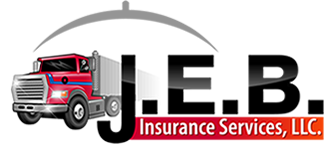Jackknifing often occurs when road conditions are slippery such as during a winter snow storm or when the pavement is wet from rain. However, it can also happen under perfect road conditions when the pavement is dry. Avoiding jackknifing is a matter of understanding how a tractor and trailer combination behave, avoiding skids, and of having quick driving reactions to stop your rig from completing a jackknife once it starts. For those who are new to truck driving, we as providers of commercial or owner operator truck insurance in Florida wish to share these tips:
Know the Difference between a Trailer Swing and Jackknifing
The trailer swing is exactly as the name suggests: the trailer is skidding while the tractor is not. This can happen when hard braking causes the trailer’s wheels to lock up. The moment that you see or sense this, release the brakes and use the tractor to pull the trailer out of its skid. This pulling action lines the trailer up with the tractor.
Jackknifing occurs when the tractor is skidding and the trailer is not. In this case, the trailer is moving forward and pushing against the tractor which increases the angle of the skid. Recovery from a jackknife is more unforgiving than a trailer swing because once the jackknife angle is 15 degrees or more, recovery is impossible. It can take less than two seconds to reach this angle of no return. Therefore, the commercial or owner operator truck driver should exercise great care not to allow the tractor to skid in the first place. If your trailer should start to skid, release your brake and steer out of the skid as you would in a rigid vehicle.
Situations That Cause Jackknifing
- Lightly loaded trailer – The tractor’s drive wheels depend on the weight of a loaded trailer to press it down on the road surface with enough force to generate sufficient wheel traction with the road. Without this traction, it’s easy to apply too much braking and cause the wheels to lock up.
- Braking while turning – Braking is best done when both the tractor and trailer are perfectly lined up. This isn’t the case during a turn. Therefore, slow down for a turn before entering it and stay off the brakes while in the turn.
- Hard braking – Brake as gradually as you can over the distance that you have. Make this a habit so that you will automatically do this when the roads are slippery. Always allow plenty of braking distance between yourself and the vehicle in front. Increase this distance in slippery conditions.
- Swerving and braking – Never swerve and brake at the same time. When you do this, the trailer and tractor aren’t lined up which can induce skidding. Brake first, then swerve.
For more information, or questions about commercial or owner operator truck insurance in Florida, contact us today.


